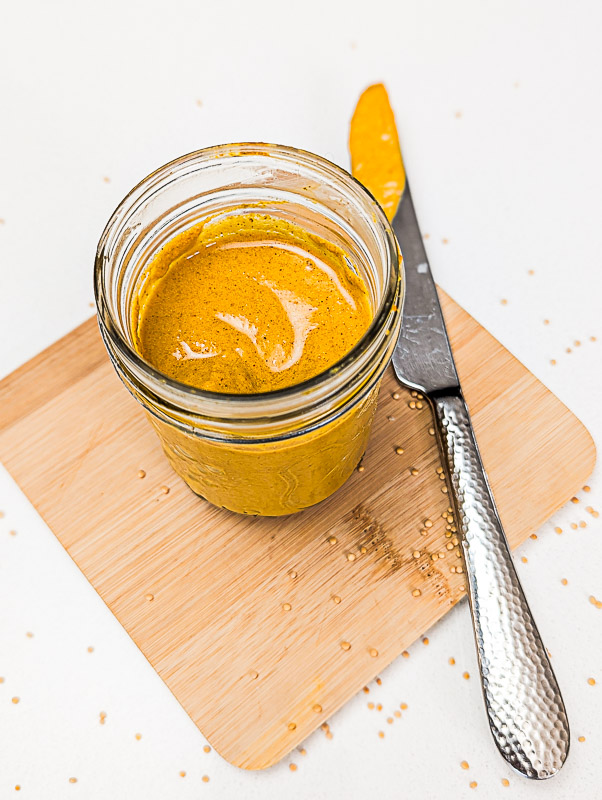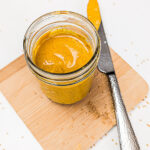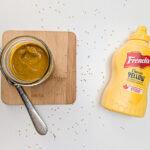

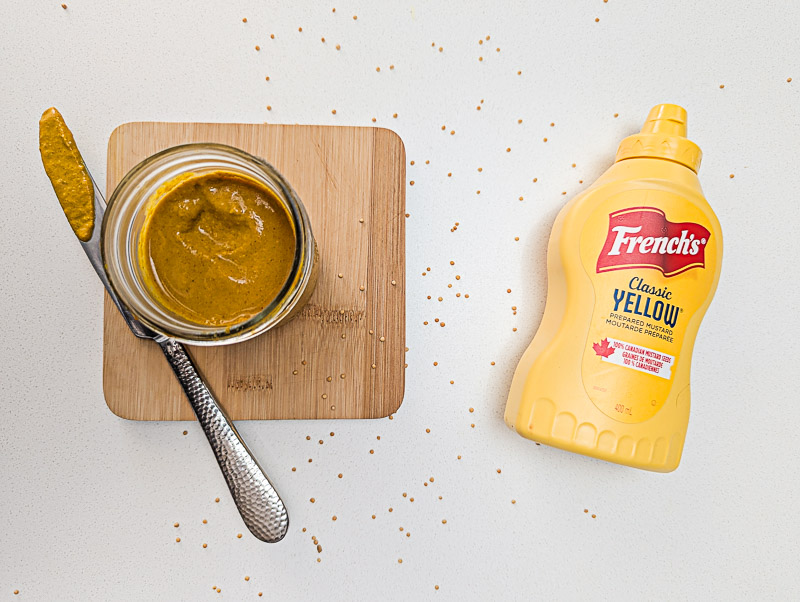
Yellow mustard, also known as American mustard, is one of the most common and widely used condiments in the Western world. Although it is common to find it already prepared in supermarkets, it can also be made at home from scratch with simple ingredients. But the question always arises, is it worth making it at home?
This post compares homemade vs store-bought mustard versions based on cost, ingredients, taste and practicality. The goal is not to point out which is better, but to understand the pros and cons of preparing mustard at home or buying it ready-made. Through this comparison, we also explore what a basic yellow mustard recipe contains, how feasible it is to make it from scratch, and in which cases it is (or is not) worth investing time and money in it.
The intensity of mustard does not come from vinegar or added spices; it comes from natural compounds that are in the seeds themselves. They contain compounds such as sinigrin (in black and brown seeds) and sinalbin (in white seeds). These compounds by themselves are almost tasteless; however, when the seeds are crushed and mixed with water (or any other aqueous liquid), an enzyme called myrosinase is released. This combination produces isothiocyanate, which is responsible for the intense flavour characteristic of mustard.
This process is completely natural and requires no additives to produce. If you are interested in this scientific part, I also did a homemade experiment with purple cabbage to measure the pH of mustard. You can see it in this other post:
Is mustard acidic? Home pH Experiment with Purple Cabbage
Before going into the details of comparing costs and flavours, I started from a simple hypothesis, preparing homemade mustard could be more economical than buying it already made. I assumed, based on common sense, that the mustard recipe has few ingredients, nothing exotic and a simple preparation.
For this comparison, I used this American-style mustard recipe It is made with ground white mustard seeds, turmeric and other common ingredients that you probably already have in your cupboard.
I bought the ingredients in regular supermarkets in Canada, such as Walmart and local stores. For comparison, I chose French’s brand yellow mustard because it is one of the most widely distributed globally, and also because of its historical value. George French popularized this mild version of mustard in the early 20th century.
I have no association with the brand, nor am I suggesting that Walmart always has the best deals or promotions. It’s handy for this comparison, but not necessarily the cheapest option. That’s why at the end of this post you’ll find a calculator where you can enter your local prices and estimate which alternative is more cost-effective in your country or region.
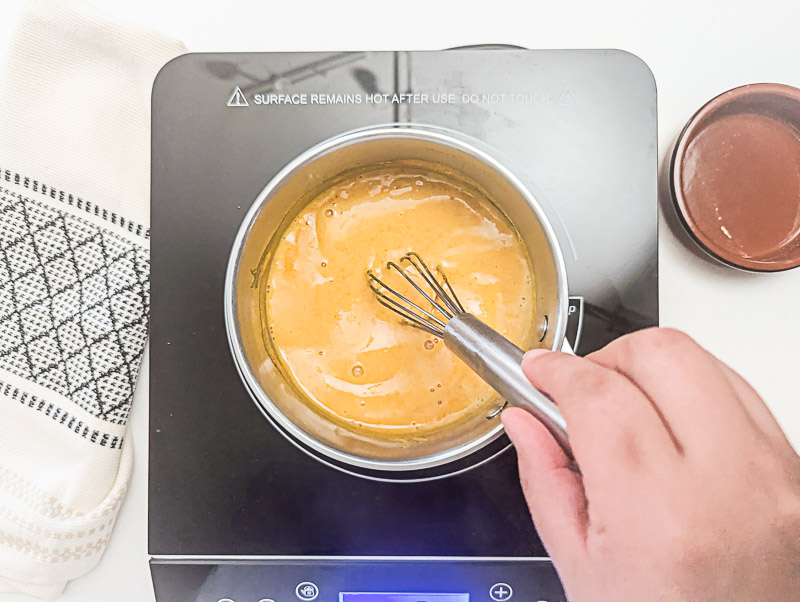
Commercial mustards, such as French’s or Heinz brands, may contain additives or ingredients that classify them as ultra-processed products. According to OpenFoodFactsthis specific brand is classified as NOVA 4, which indicates a high degree of processing, even though the ingredient list is not extensive. In fact, this specific mustard has only one additive, “flavouring” and although this term sounds innocent, in many countries, including the United States and Canada, it is not mandatory to detail its composition, even if it is artificial or contains traces of allergens.
This does not imply that commercial mustards are “bad” by default, but it does raise important questions about transparency and public health. The use of flavourings is regulated in most countries, but each has its own criteria. In general, a flavouring is a compound that is added to enhance the aroma or flavour of a product, whether it is of natural origin, artificial or a mixture of both. However, the exact compounds that comprise it are rarely specified, making it difficult to know precisely what is being consumed.
In addition, many times flavourings are not detailed for formula or brand protection reasons, which makes them generic terms and not very transparent. In the case of this mustard, its nutritional profile has also been rated “E” by OpenFoodFacts, which indicates a low nutritional level.
It should be noted that the classification and ingredients may vary depending on the country of manufacture. For this reason, I recommend using applications such as OpenFoodFacts and carefully reading the labels of the products you consume.
In contrast, homemade yellow mustard, while similar in ingredients, offers a key difference: it avoids flavourings and allows total control over ingredient quality, texture and flavour intensity. You can adjust the spiciness to your liking, without resorting to other stronger mustards or mustards with additives.
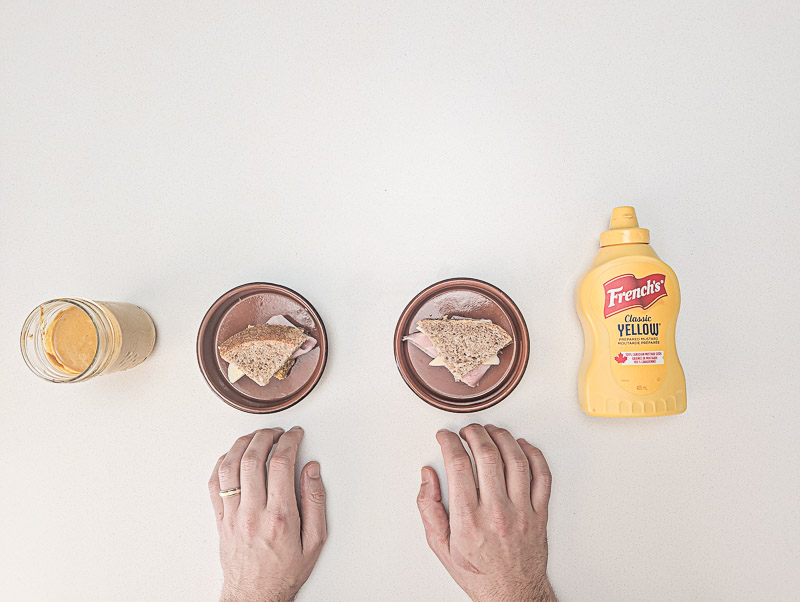
My husband and I tried both versions. He is used to intense flavours, like wasabi or fresh garlic. Personally, in Mexico, we usually use chilli to give that depth and intensity to the food.
For him, the taste of the homemade mustard was more authentic, with a more defined and intense spiciness than the commercial version. For me, on the other hand, I found the store-bought mustard to be milder but with a stable flavour, and that also has its advantage. Also, I like this particular brand because it does not contain added sugar to soften or mask the natural flavour of the mustard.
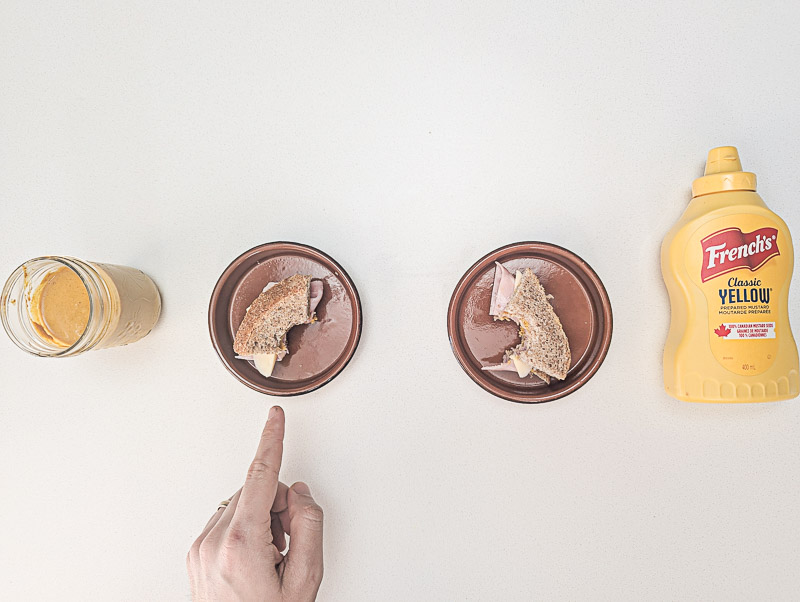
Is it worth it? In terms of price, no, homemade American mustard costs more than purchased mustard. In this case, the hypothesis is incorrect: making homemade mustard costs more expensive than store-bought mustard. Homemade mustard costs more than French’s brand, costs about the same as Heintz brand and is much more expensive than Walmart’s low-cost Great Value brand. In numbers, it is about 32.7% more expensive than the French’s brand and 109.7% more expensive than the supermarket’s economy brand. If you manage to buy bulk mustard seeds or organic versions at a good price, you can save, but for most people, that option may not be possible.
In terms of taste and transparency, yes, making homemade mustard makes sense if you prefer to avoid additives and control the intensity of the flavor. This mustard recipe is simple and can be made in less than an hour, without specialized equipment and with affordable ingredients.
If you are looking for the most economical regular option, store-bought. Some low-cost brands, such as Great Value, contain no additives. The flavour is quite mild, saves you 30 to 40 minutes in the kitchen and keeps very well in the refrigerator. If you are ever in doubt, reading labels can be a good start. It may seem slow at first, but over time, these small habits can make a real difference in how we relate to what we eat and how we take care of our health.
It is worth making it at home if, where you live, commercial mustards are very expensive or have more additives than just flavourings, such as sulphites, for example. If you consume organic products, in Canada in particular, it is possible to find organic seeds in bulk at a good price. In that case, the cost of homemade mustard can be around $2.13 per 250ml, which represents a savings of between $4 and $6, depending on the brand you compare it to. At the end of the post, you will find a calculator that will help you estimate the cost in your country, so you don’t have to waste time doing the math.
Making mustard at home is not essential, but it can be a small act of reconnecting with what we eat. It reminds us that food is not just ready-to-use products, but combinations of ingredients, history, chemistry and culture.
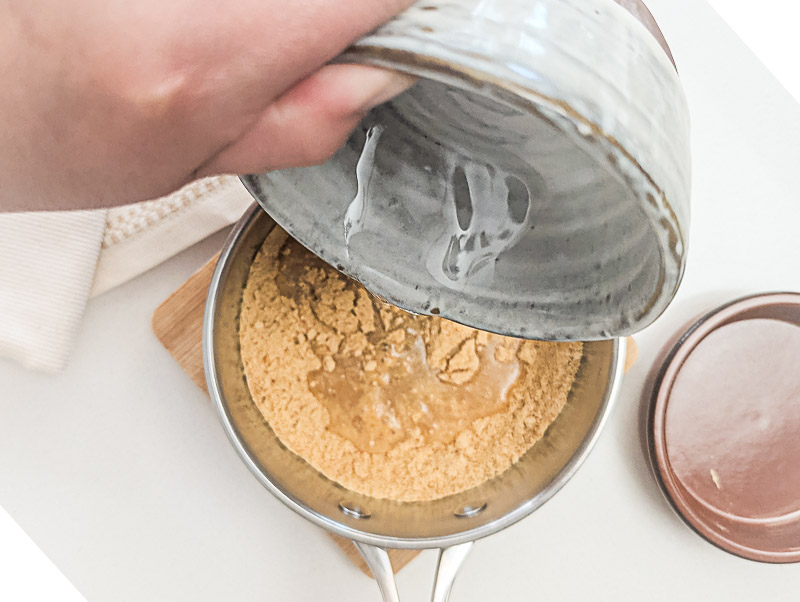
And while we can’t always avoid processed foods or additives, we can decide when it’s worth the effort and when it’s not. Because at the end of the day, it’s not about making everything perfect, but about doing the best we can, without losing our “joie de vivre” or our taste for food.
